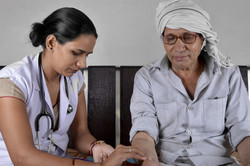Wilson's disease in India
WD is an autosomal recessive disease resulting from mutations in one gene, and one in a hundred people carry a single abnormal copy of the gene. Resulting in accumulation of copper in tissues, WD symptoms are neurological and can also lead to liver disease. The WILSONINDIA (Novel opportunities for diagnosis and therapy of Wilson’s disease in India) project used functional characterisation of individual mutations in a newly developed cell model. Other technologies harnessed for the project work included DNA chip-based diagnosis and adult stem cell-based therapy of liver disease. Researchers had the opportunity to work with a large number of WD patients and assess alternative research protocols in India for the disease. WD protein is also known as ATP7B and some 600 mutations or variants of this gene were identified. However, WD in most populations is caused by a small number of mutations specific to that group of people. WILSONINDIA researchers analysed the mutational pattern in a large region of western India. Altogether, 34 disease-causing mutations were found, out of which, 14 were novel variations. The most frequent mutations were found to be p.C271* and a novel mutation p.E122fs. Study of these frequent mutations alongside disease severity assessments allowed an analysis of genotype with phenotype correlations. Overall, the study revealed that the most frequent mutation across India that results in a moderate to severe disabling phenotype is p.C271*. The clinical management of WD differs between countries of the EU and India. Separate protocols for diagnosis and therapy of WD in EU countries and India were compared using direct DNA sequencing. On-site research modules for preparation and characterisation of mesenchymal stem cells were performed. Work of the WILSONINDIA project has built sustainable research collaboration between the EU and India. Beneficiaries will be associated small and medium-sized enterprises and both young and experienced researchers who could find their careers elevated. Enhanced knowledge of the genetic basis of WD could result in targeted therapies.
Keywords
Wilson's disease, India, functional characterisation, mutation, cell model

